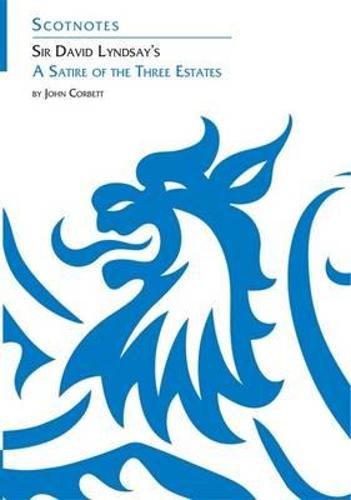
Sir David Lyndsay’s
A SATIRE OF THE THREE ESTATES
John Corbett
Published in: Paperback
By: Association for Scottish Literary Studies, 2009
Price: £6.95
ISBN 978-0-948877-95-7
Sir David Lyndsay’s A Satire of the Three Estates is the earliest complete Scottish play on record, dating from the middle of the sixteenth century. By turns funny and formal, obscene and ceremonial, and filled with sharp social commentary, it is a confident expression of dramatic prowess.
John Corbett’s Scotnote examines the historical background, explores the play’s language and style, and gives a concise introduction to this key work in the Scottish theatrical tradition. These notes are suitable for senior school pupils and students at all levels.
CONTENTS
- Introduction
- Sir David Lyndsay: his life and work
- The history of the text
- Dramatis Personae
- A summary of the play
- Historical and political background
- Literary influences on the play
- Staging the play in the 16th century
- Language and style
- Two key scenes
- Modern versions and productions
- The influence of Ane Satyre of the Thrie Estaitis
- Conclusion
- Further reading
- Timeline